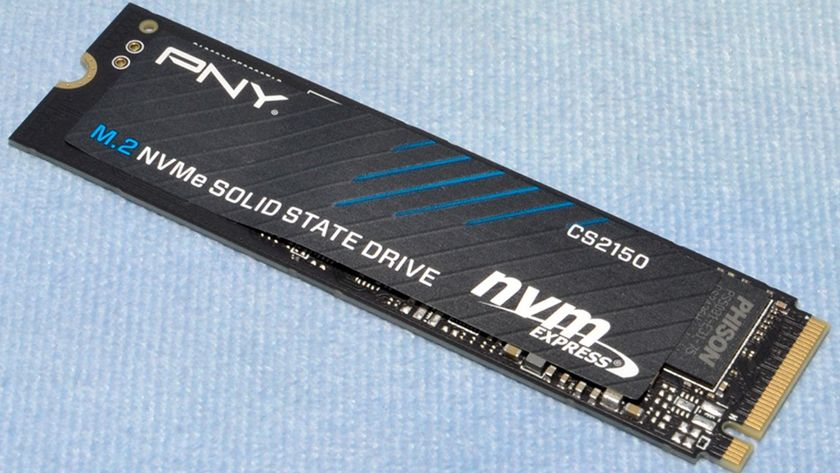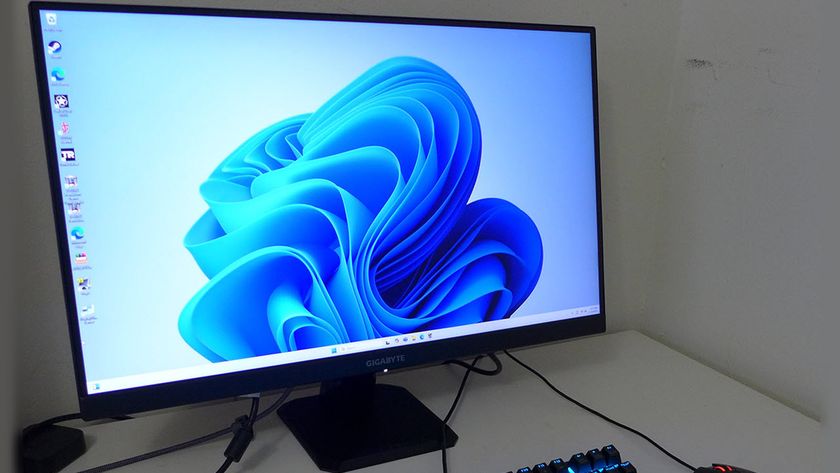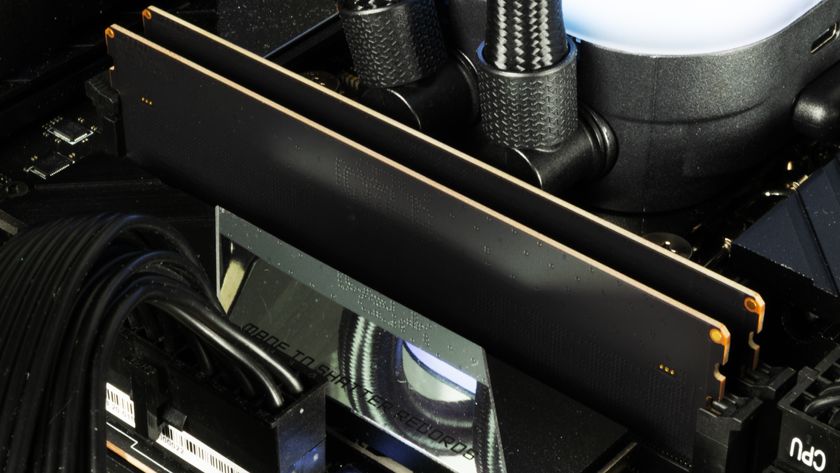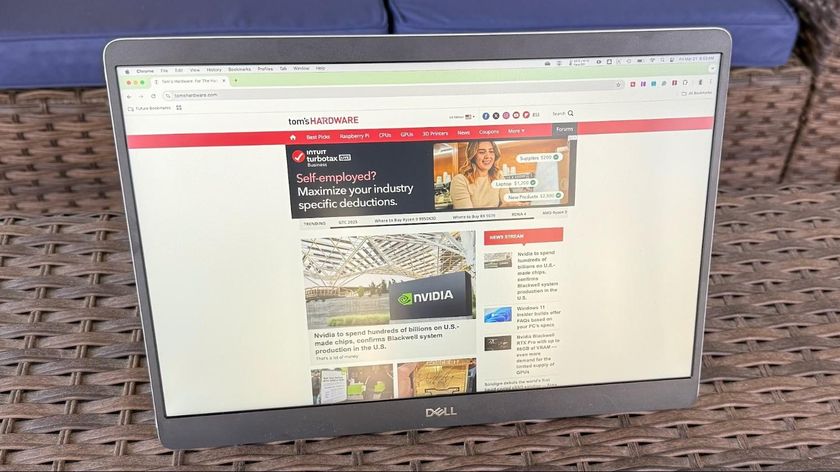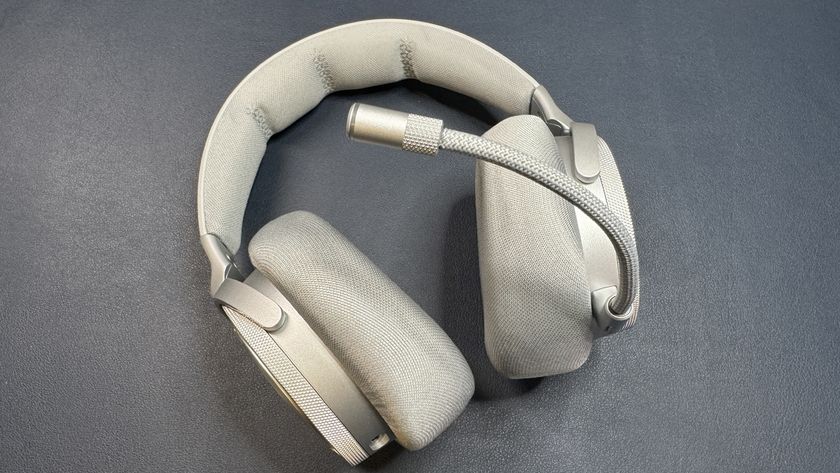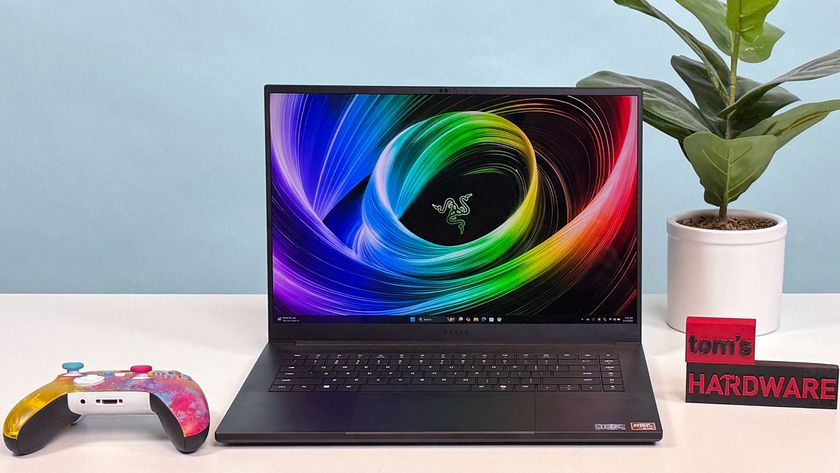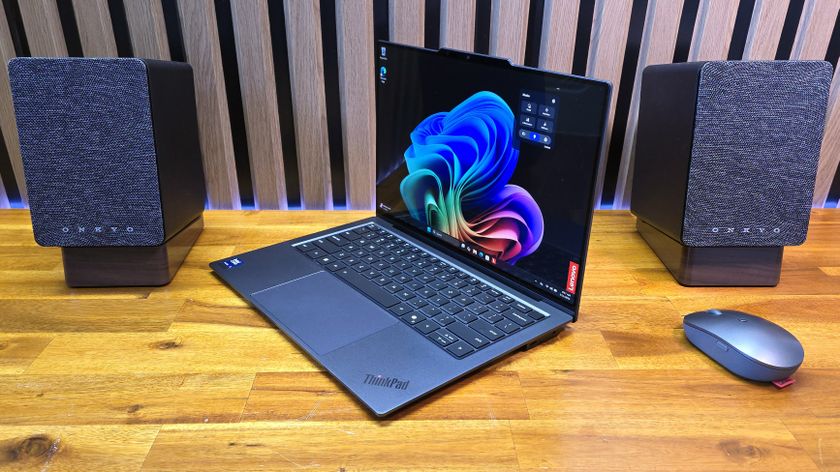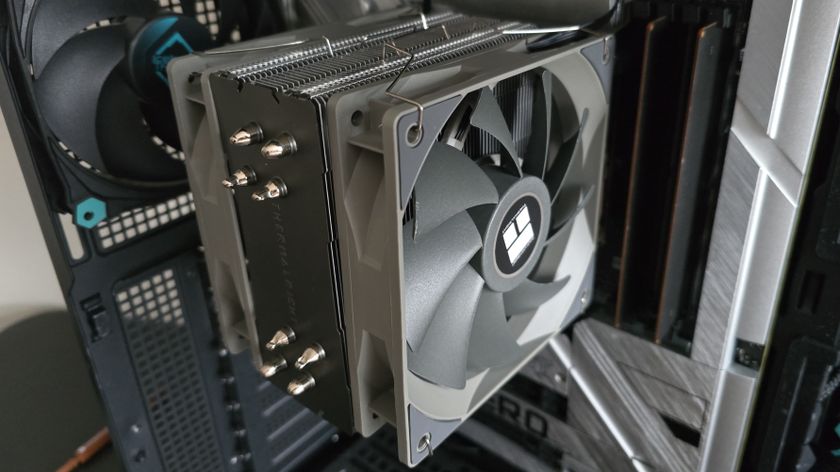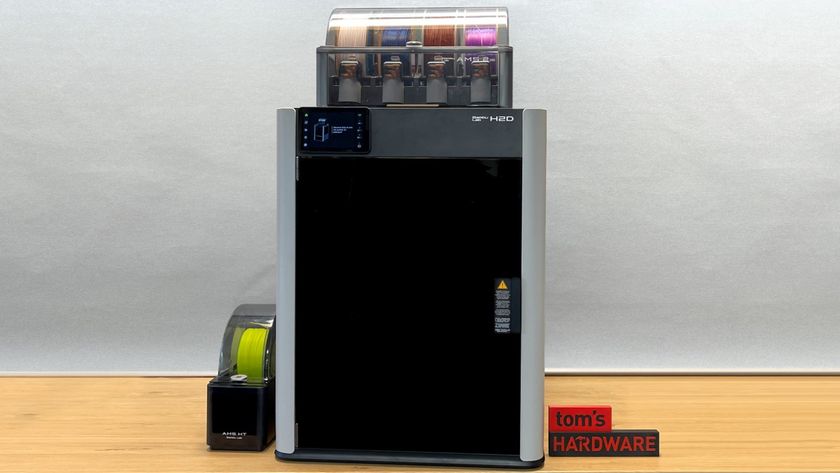Tom's Hardware Verdict
A solid platform for your science experiments, backed up by two great software features that cover all levels of users.
Pros
- +
Setup wizard is smooth
- +
Software is easy to use
- +
Small size
- +
Ease of use
Cons
- -
Only QW/ST breakout, no GPIO
Why you can trust Tom's Hardware
No sooner had the Raspberry Pi Pico W been announced than UK based official Raspberry Pi reseller Pimoroni unveiled a range of Pico W based products. We’ve already reviewed Inventor 2040 W, and it received the coveted Editor’s Choice award. This board introduced us to “Pico W Aboard”, which is Pimoroni’s range of boards that feature a surface mount soldered Pico W at its core.
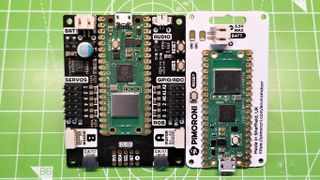
For its latest Pico W add-on kit Pimoroni presents Enviro Indoor, a miniature sensor platform that can detect temperature, air pressure, humidity, air quality and light levels. Smaller than a Pokemon trading card, and with an easy to use setup wizard, Enviro Indoor could be the sensor platform for your citizen science project.
How easy is it to use and what can we do with it? For that we need to put it on the bench and take it for a test.
Enviro Indoor Specifications
| SoC | Raspberry Pi Pico W |
| RP2040 Arm Cortex M0+ Dual Core at 133 MHz | |
| RAM | 264KB SRAM |
| Storage | 2MB Flash |
| Connectivity | Infineon CYW43439 2.4 GHz Wi-Fi with onboard antenna |
| Connected via SPI | |
| Sensors | BME688 4-in-1 temperature, pressure, humidity and gas sensor |
| BH1745 light (luminance and colour) sensor | |
| GPIO | 1 x QwST (Qwicc / Stemma QT compatible) port |
| User/activity LED | |
| Warning LED | |
| User (poke) button | |
| Reset button | |
| Real-Time Clock (RTC) | |
| Power / Data | Micro USB for data and power |
| JST-PH (2 pin) connector for attaching battery (input voltage 2.5V - 5.5V | |
| Dimensions | 36 x 69 mm |
| Price | $35 (£36) |
Using Enviro Indoor









There are two ways to use Enviro Indoor. If you just want to start logging data, you can use the provisioning wizard to quickly set up your device. Powering on Enviro Indoor, press the poke button to set up a temporary Wi-Fi access point. Connect to the access point and the wizard guides you through the process of naming the device, setting up Wi-Fi and then pointing Enviro Indoor to an online service such as MQTT, Adafruit.IO etc.
This is slick. The process is easy to follow and at the end we get an appliance sending data to our chosen service. We really liked this process, and as it comes ready to go, we can see many makers opting for this low friction approach.
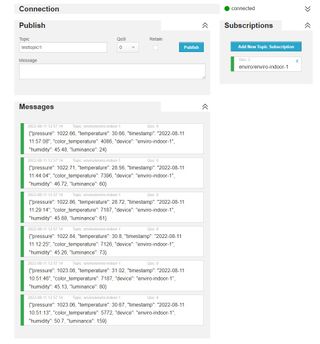
We set up our board to send data to a public MQTT broker and after a short pause we saw the data appear in our MQTT client. The data is sent as a JSON object, very similar to Python’s dictionary data type, which provides clear and easily usable data.
What if we want to forge our own project? Enviro Indoor can also be used as a typical Raspberry Pi Pico W device with your own code. For our recent How to Use Raspberry Pi Pico W with Node-RED tutorial we used Enviro Indoor as our sensor device. With very little MicroPython code, a little MQTT magic, and a Raspberry Pi 4 running Node-RED, we quickly had a web based application giving us the latest environmental data in our home. Pimoroni has created a great MicroPython module which abstracts the complexities of the sensors, giving us a clear and easy means to get the data for our project.
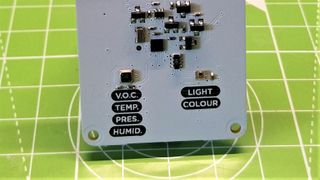
The sensors at the heart of Enviro Indoor are the BME688, a four in one temperature, air pressure, humidity and volatile organic compound (VOC) sensor, and the BH1745 luminance and color sensor. The BME688 is a solid choice. Covering temperature, pressure and humidity is par for the course in a temperature sensor, but VOC is a hot topic given the pandemic.
VOC is an indicator of air quality and gases in the air. The BME688 even has some basic AI which can be trained to fine tune gas detection. The BH1745 can detect basic light levels and determine colors, made up of RGB values. If you need your Enviro Indoor to react to darkness, the BH1745 is the tool for the job.




We are not limited to just two sensors. The onboard QW/ST port provides access to a plethora of Stemma QT / Qwiic / Breakout Garden sensors. Normally we would test with a BME688, but as this board already has one, we dug deep into our box and found an MSA301 triple axis accelerometer. That’s not a natural fit given the use case of the board, but it only took us a few moments to get live accelerometer data from the sensor, data which could also be sent to an online service.
The Qw/ST connector is the only means to access the GPIO, no other pins are broken out for use. This is unfortunate, as we would’ve loved to connect other devices to our board. But we can overlook this because it would add bulk, and a mass of wires to the kit. Enviro Indoor is an appliance. We code it, and hang it up for use. If we need the extra GPIO, then we could quite easily purchase our own BME688 and BH1745 with a Raspberry Pi Pico W.

Powering the unit is very similar to Inventor 2040 W. Via the JST-PH connector we can use either AAA battery packs or a single cell LiPo. This is also where things become a little smarter than an average board. Enviro boards can be set to go into a deep sleep mode. A mode where only the RTC is active.
By having the device enter a deep sleep, and only wake to take a reading and send the data to a service every hour, we can run our projects for a long time. Pimoroni makes the bold claim “In between taking and uploading readings Enviro spends most of its time in a deep sleep which consumes very little power - it can stay in this state for years on just a couple of AA batteries!” Note that there is no onboard charging, so your batteries / LiPo will need to be charged using the appropriate external charger.
The $35 price tag suggests that this is an appliance. It’s good for those that want either the ease of use of an Internet connected data gathering device, or for those that want minimal fuss and are happy to pay a premium. The build is superb, and the builtin hanger is a smart move that means we can hang this board up, and forget about it.
Enviro Indoor would be ideal in the science lab, home office or workplace. The wizard provides a frictionless path to data science, and the hardware looks great.
If you want to get into electronic based science projects, Enviro Indoor should be your first choice.
Great build quality and great software are the foundation of a great experience. Enviro Indoor provides that and much more. The wizard is a smart move, and opens the board up to those who are new to the subject. Sure the price is a little more expensive than buying the Pico W and sensors ourselves, but we gain time and ease of use for our cash outlay.
MORE: Best RP2040 Boards
MORE: Best Raspberry Pi Projects
MORE: Raspberry Pi: How to Get Started
Les Pounder is an associate editor at Tom's Hardware. He is a creative technologist and for seven years has created projects to educate and inspire minds both young and old. He has worked with the Raspberry Pi Foundation to write and deliver their teacher training program "Picademy".
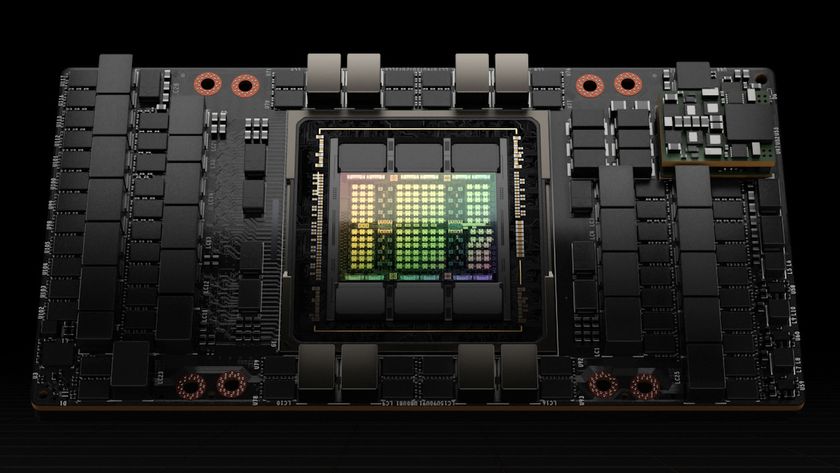
Chinese tech giants boosted Nvidia GPU purchases by 4x to 6x during Q1
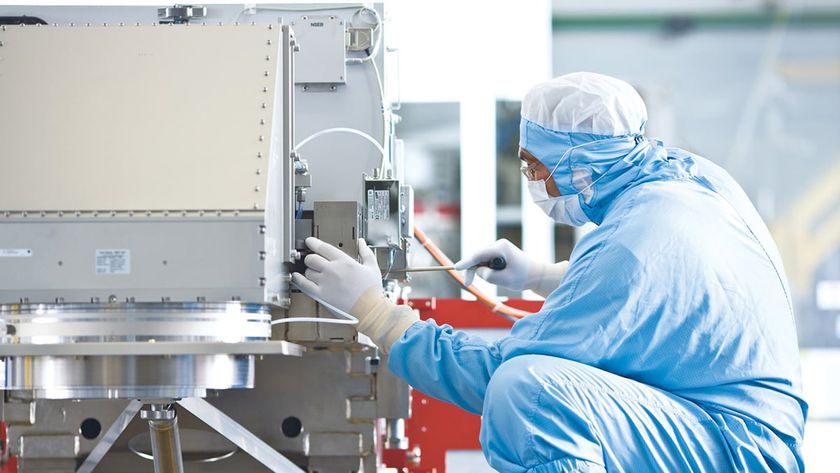
Russian spy infiltrates ASML and NXP to steal technical data necessary to build 28nm-capable fabs
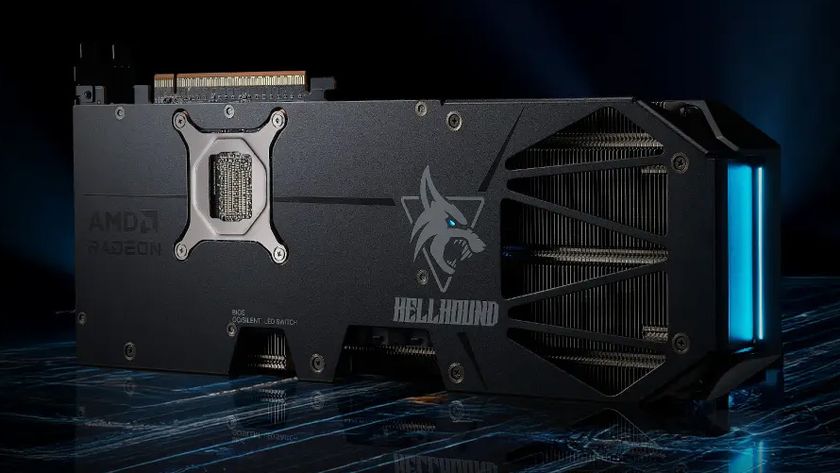
Defective RX 9070 XT card with pitted silicon surface runs extremely hot — report indicates it's unclear if this was an isolated incident
-
E_S Buyer beware. DO NOT BUY THIS BOARD FOR VOC.Reply
So disappointed with this board and this article. I bought the board after reading this article. Did you even try the board? If you did, you would know that the out of the box configuration gives you no VOC data. While the chip included can sample data, making use of this data requires you to take data samples and train an algorithm.
1) I am not a data scientist.
2)I do not know what chemicals are in my home to even train the algorithm against
3)I have found zero resources online providing pre-trained algorithms.
This is a sample of data actually provided by the board in its default configuration.
{"readings": {"pressure": 988.33, "temperature": 27.86, "color_temperature": 3204, "humidity": 36.11, "luminance": 75}, "nickname": "enviro-main", "timestamp": "2022-09-04 00:55:03"}
Don't take my word for it. Here is a completely unanswered issue listed on their GitHub page.
https://github.com/pimoroni/enviro/issues/34
I am totally willing to eat my words and admit I am wrong if you can prove me wrong. In fact I would welcome it, because I would love to use the VOC feature. Yes I have seen Bosch videos on training an AI model. Yes it could be done. Yes training the models on the surface seems simple enough. But I don't have high concentration samples of deadly, dangerous, and concerning compounds to train models. Not to mention training an efficient and usable model is a whole different level. Then you have to write a bunch of code around the model to analyze samples.
